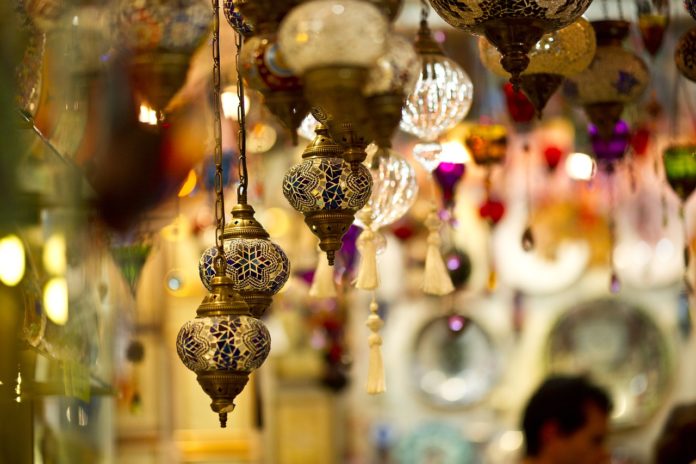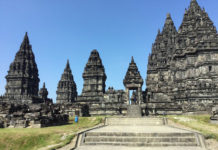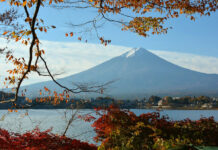Xelexi.com – Packed to the brim with ancient monuments remaining from the parade of conquerors and endowed with a showcase scenery that never fails to impress, Turkey is an enchanting destination that straddles Asia and Europe.
Turkey has 13 UNESCO World Heritage Sites, such as the “Historic Areas of Istanbul”, the “Rock Sites of Cappadocia”, and the “Neolithic Site of Çatalhöyük”. Turkey also hosts two of the Seven Wonders of the Ancient World: the Mausoleum in Halicarnassus and the Temple of Artemis in Ephesus.
Here are the most famous landmarks in Turkey:
Grand Bazaar (Kapali Carsi)
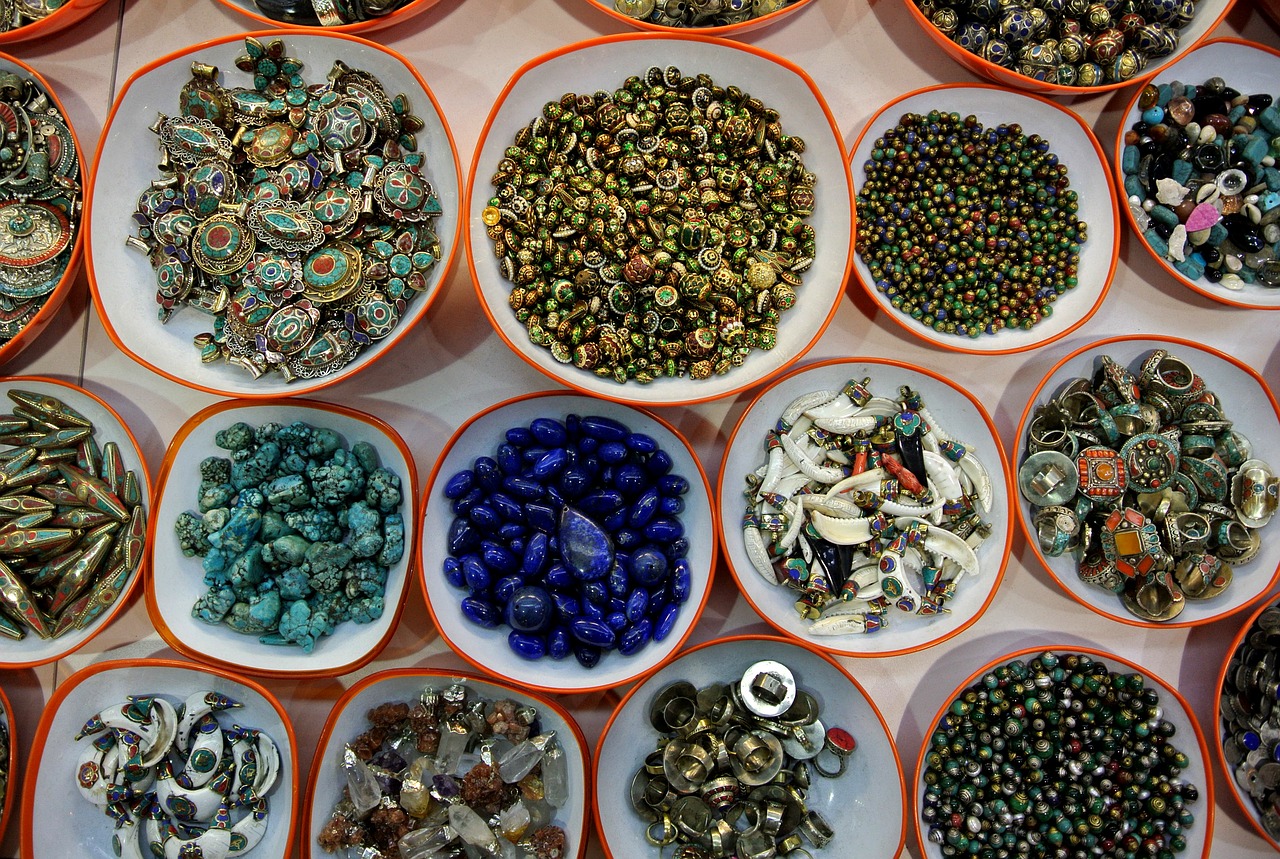
The Grand Bazaar, or Kapali Carsisi, is the mother of all markets, a treasure trove of gifts, souvenirs, essentials and fripperies. Heading into the cavernous bazaar from the daylight, it takes a minute for your eyes to adjust to this Arabian Nights visual feast of glimmering Turkish lights, brightly colored rugs and flickering candles.
The Grand Bazar of Istanbul is often regarded as one of the first shopping malls of the world. It is located inside the Walled city of Istanbul, in the district of Fatih and in the neighbourhood (mahalle) bearing the same name (Kapalıçarşı). It stretches roughly from west to east between the mosques of Beyazit and of Nuruosmaniye. The Bazaar can easily be reached from Sultanahmet and Sirkeci by trams (Beyazıt-Kapalıçarşı stop).
>> Private Tours to Grand Bazaar
Blue Mosque (Sultan Ahmet Camii)
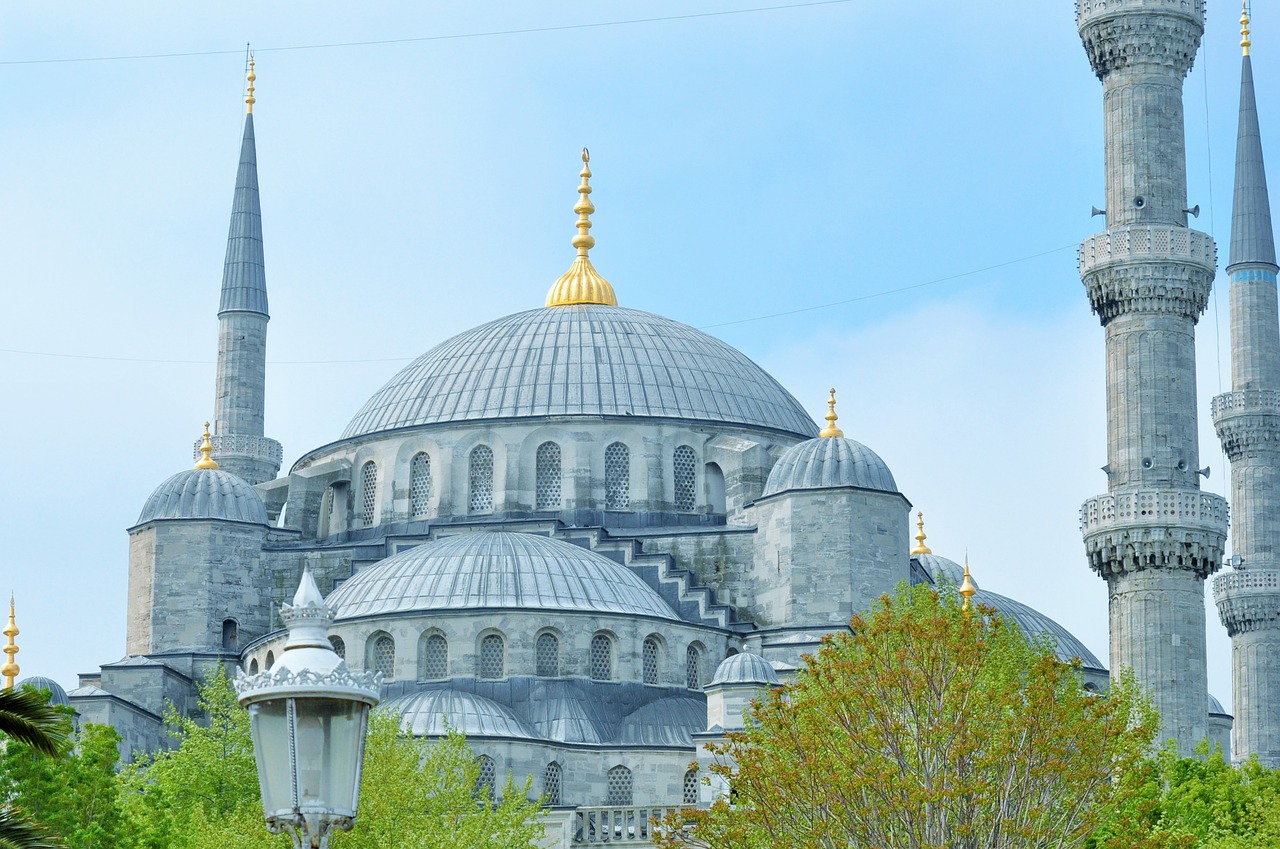
A distinct Istanbul landmark, the world-famous Blue Mosque (Sultan Ahmet Camii in Turkish) opened in 1616 and is renowned for its slender minarets and collection of domes. The Sultan Ahmet I conceived the structure to rival the nearby Byzantine Hagia Sofia which stands opposite the mosque in the city’s busiest square.
It was constructed over the site of an ancient hippodrome and Byzantine palace, and is one of the most beautiful mosques in Turkey.
Hand-painted blue tiles adorn the mosque’s interior walls, and at night the mosque is bathed in blue as lights frame the mosque’s five main domes, six minarets and eight secondary domes.
>> Private Tours to Blue Mosque
Suleymaniye Mosque
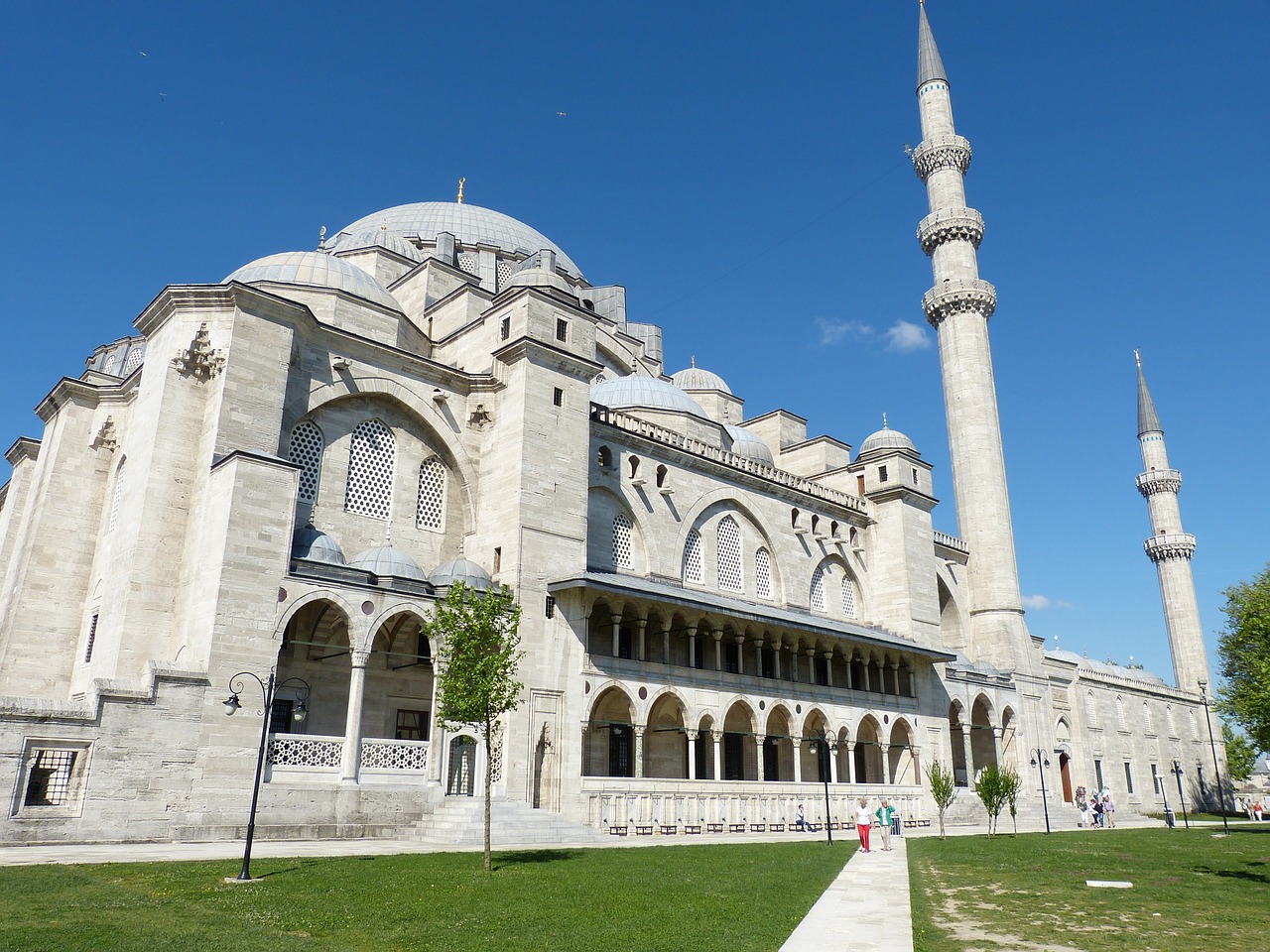
The largest mosque in Istanbul, the Suleymaniye Mosque was built between 1550 and 1558 on the orders of Sultan Suleyman the Magnificent. It is widely known as imperial architect Sinan’s greatest masterpiece.
Constructed as an almost perfect square, the interior of the Suleymaniye Mosque is grand in its simplicity, with basic designs in ivory and mother of pearl and a subtle use of Iznik tiles. The mosque was designed as part of a larger complex that included a hospital, primary school, a caravanseri, four madrassahs, a medical college and a public kitchen.
Two mausoleums stand in the gardens behind the mosque, including the tombs of Suleyman I and his wife, daughter, mother and sister, as well as several other Ottoman sultans.
>> Private Tours to Suleymaniye Mosque
Egyptian Spice Bazaar
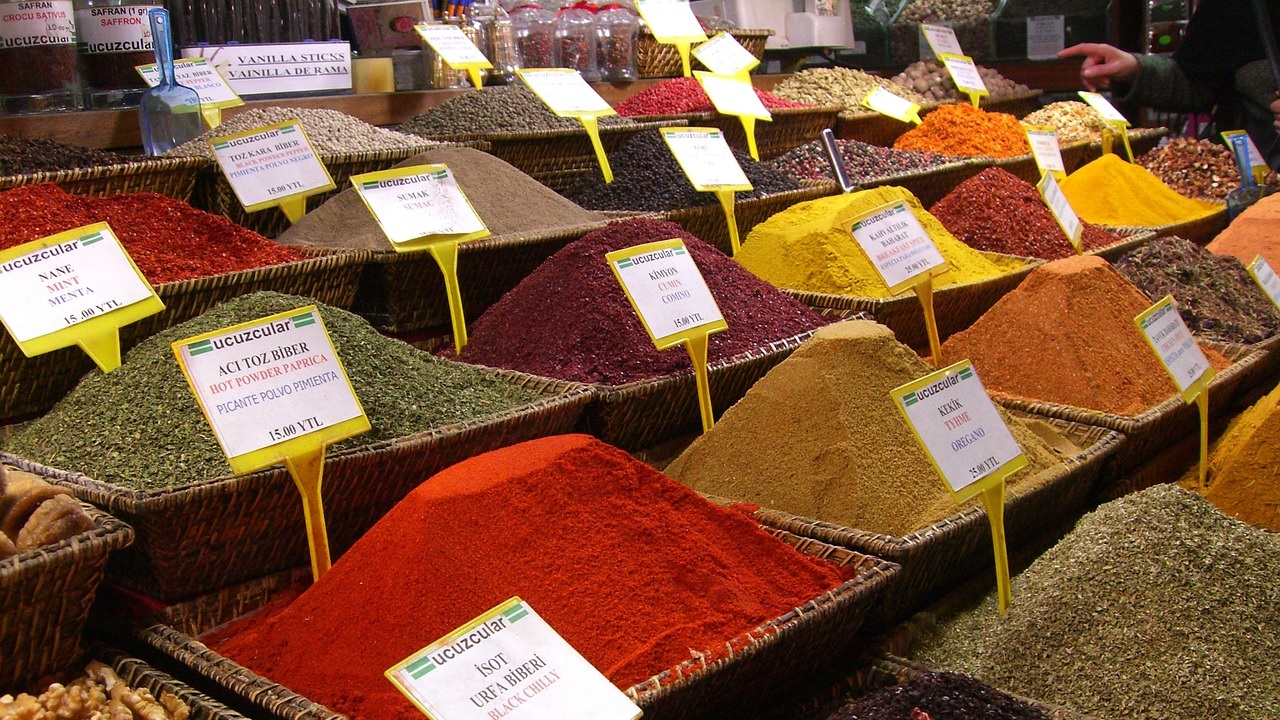
The heady scents of saffron, cloves, sugar and spice fill the air at the Egyptian Spice Bazaar and Market, or Misir Carsisi, one of Istanbul’s oldest markets. Aisle after aisle of stallholders sell their wares in this cavernous covered market, built in 1660, under the market’s vaulted ceiling lit by Turkish lamps.
Baskets filled with every spice under the sun add colors of gold, orange, yellow and green, and the array of dried fruits and nuts is astounding. Stock up on Turkish delight, dried apricots, pistachios and walnuts, honey sweets and top-quality saffron. This is a place to simply dive in and wander. Don’t have an agenda, just walk the crowded stalls and get lost. Stop for a tea, stop to chat with a carpet seller. If you’re in a rush, you’re missing the point.
>> Private Tours to Egyptian Spice Bazaar
The Ancient Greek City of Ephesus (Efeze)
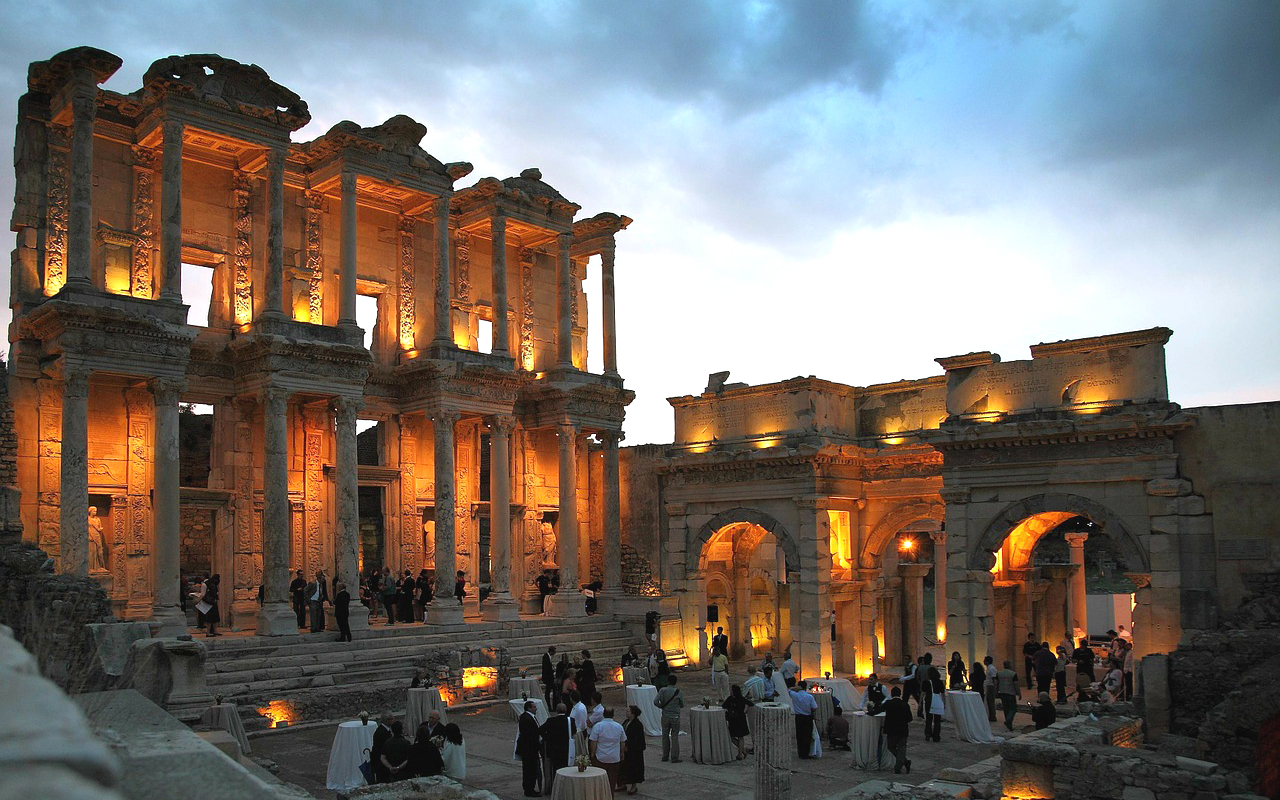
The ancient Greek city of Ephesus, also know as Efeze. Famed for its Temple of Artemis, it is also one of the Seven Wonders of the Ancient World.
Ephesus’s most spectacular site has to be the façade of the Library of Celsus. Constructed between 110 and 135AD, the library originally had three floors, but an earthquake destroyed the building in the 10th century.
Other sites include the Theater, Basilica of St. John, the Cave of the Seven Sleepers, Church of Mary, House of the Virgin, the Isabey Mosque, the Prytaneion, the synagogue and the Temple of Hadrian. All the sites are in varying states of disrepair. Unfortunately, all that remains of the Temple of Artemis, rumoured to have been four times as large as the Parthenon, is one column standing in a marshy basin.
>> Private Tours to Ephesus (Efeze)
The Bosphorus Bidge
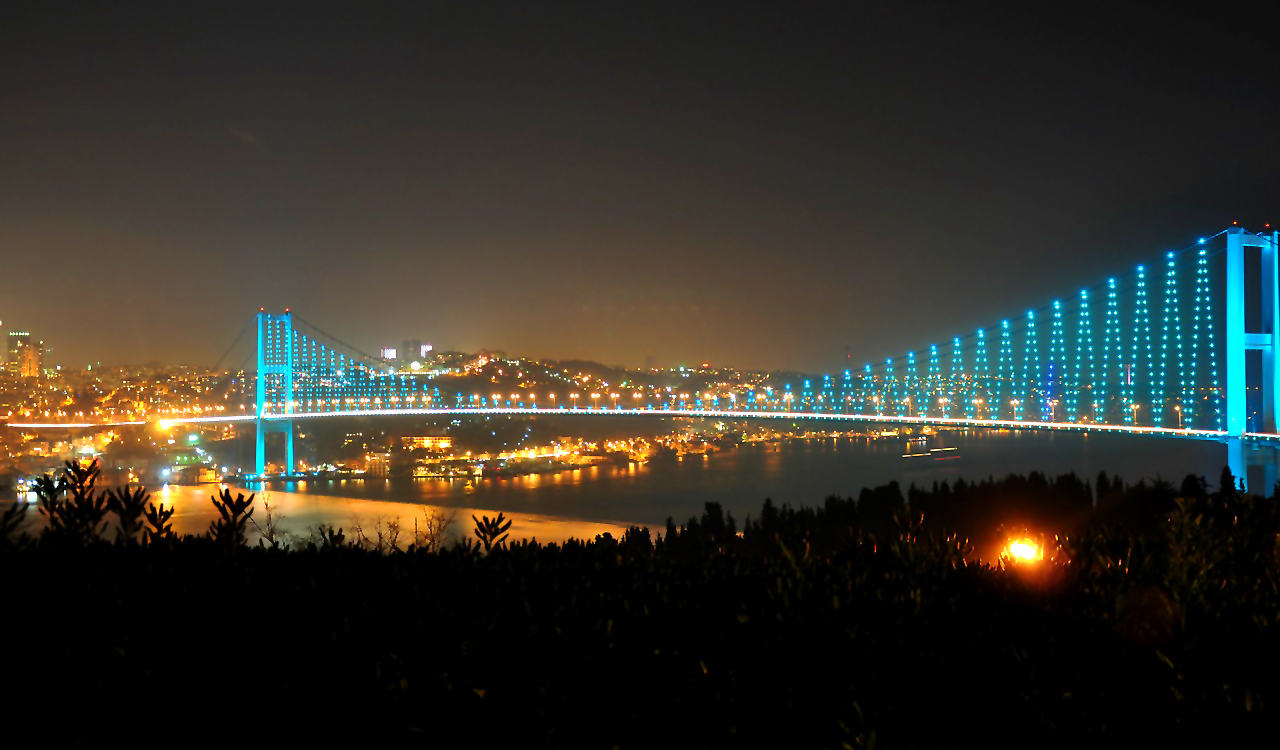
The Bosphorus Bridge is one of two bridges that spans the Bosphorus Strait, connecting the European and Asian sides of Istanbul. It stretches from Ortakoy on the European side to Beylerbeyi on the Asian side and is sometimes referred to as the First Bosphorus Bridge.
At 1560 meters long, the Bosphorus Bridge was the fourth longest suspension bridge in the world when it opened in 1973 and was the first bridge to connect Europe and Asia since a bridge spanning the Dardanelles in 480 B.C.
Today, it is the 21st longest suspension bridge in the world. In 2007, an LED lighting system was installed to illuminate the bridge at night and the computerized system is now used to create a colorful light show every evening. While the bridge is typically closed to pedestrians, it opens each October for the Istanbul Eurasia Marathon – the only marathon that crosses from one continent to another.
>> Private Tours to Bosphorus Bridge
Göreme National Park in Cappadocia

It’s one of the strangest landscapes you’ll ever see: the cliffs and valleys and fairy chimneys of Göreme National Park in Cappadocia. Wind and water erosion scoured out this land of soft volcanic ash (tufa) leaving this extraordinary place of valleys and pillars, some of which rise to 130 feet (40m).
The earliest settlers were Christian exiles in Roman times and they carved churches into the rock, along with houses and tombs. In the Middle Ages Göreme became an important religious center with monasteries, churches and chapels; many of which have impressive Byzantine religious wall paintings. Some of the most important are Basil Kilise (St Basil’s Church), Elmali Kilise (Apple Church), and the richly decorated Tokali Kilise (Buckle Church), which is the oldest. The best-preserved and recently restored frescoes can be found in the Karanlık Kilise (Dark Church).
>> Private Tours to Cappadocia
Topkapi Palace
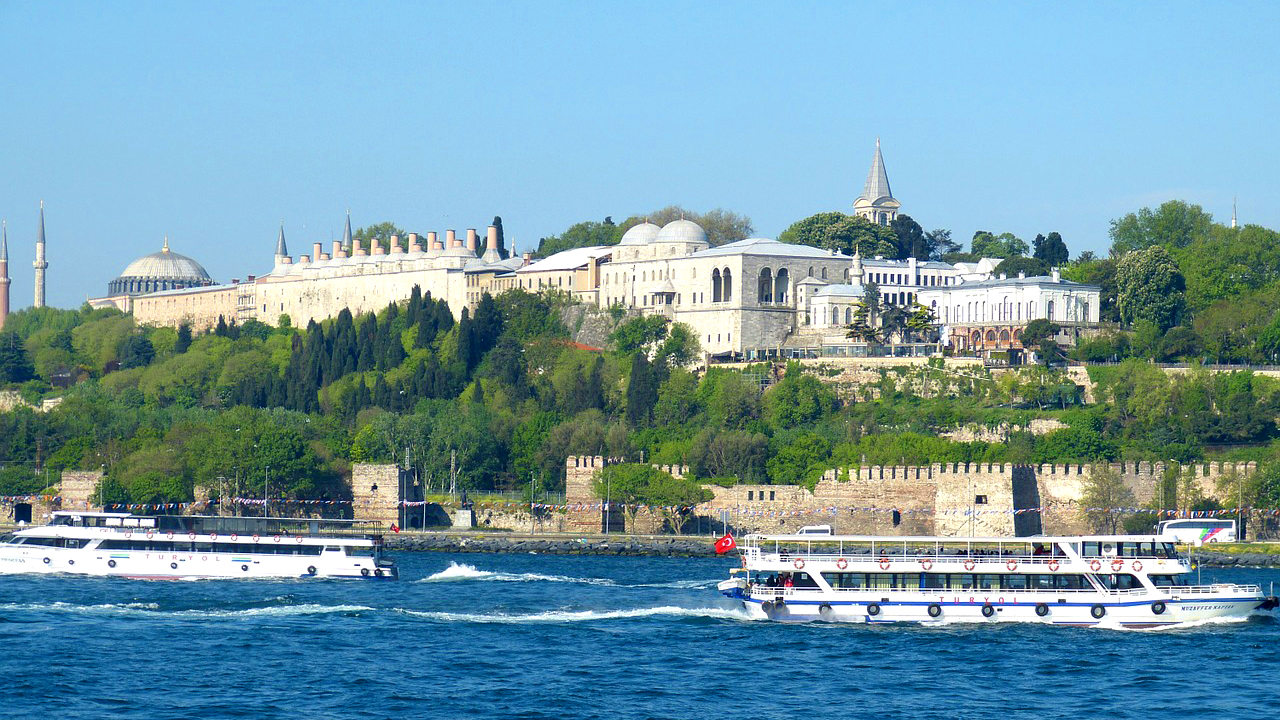
Synonymous with Ottoman style architecture, the Topkapi Palace is one of Istanbul’s most historical landmarks. Resident to Sultans for over 400 years, the palace is a measure of its empiric significance.
The construction of Topkapi Palace began in 1459, ordered by Mehmed the Conqueror, six years after the conquest of Constantinople. Topkapı was originally called the “New Palace” to distinguish it from the Old Palace in Beyazıt Square. It was given the name Topkapı, meaning Cannon Gate, in the 19th century.
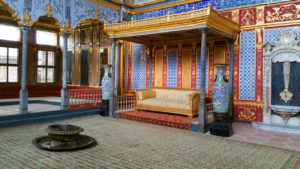
Following the end of the Ottoman Empire in 1923, Topkapı was transformed into a museum by a government decree dated April 3, 1924. The palace complex has hundreds of rooms and chambers, but only the most important are accessible to the public today, including the Ottoman imperial harem and the treasury, called hazine where the Spoonmaker’s Diamond (Kaşıkçı Elması) – an 86 carat (17.2g) pear-shaped diamond – and Topkapi Dagger are on display.
The museum collection also includes Ottoman clothing, weapons, armor, miniatures, religious relics, and illuminated manuscripts like the Topkapi manuscript. The complex is guarded by officials of the ministry as well as armed guards of the Turkish military. Topkapı Palace is part the Historic Areas of Istanbul, a group of sites in Istanbul that were added to the UNESCO World Heritage Site in 1985.
>> Private Tours to Topkapi Palace
Hagia Sophia (Aya Sofya)
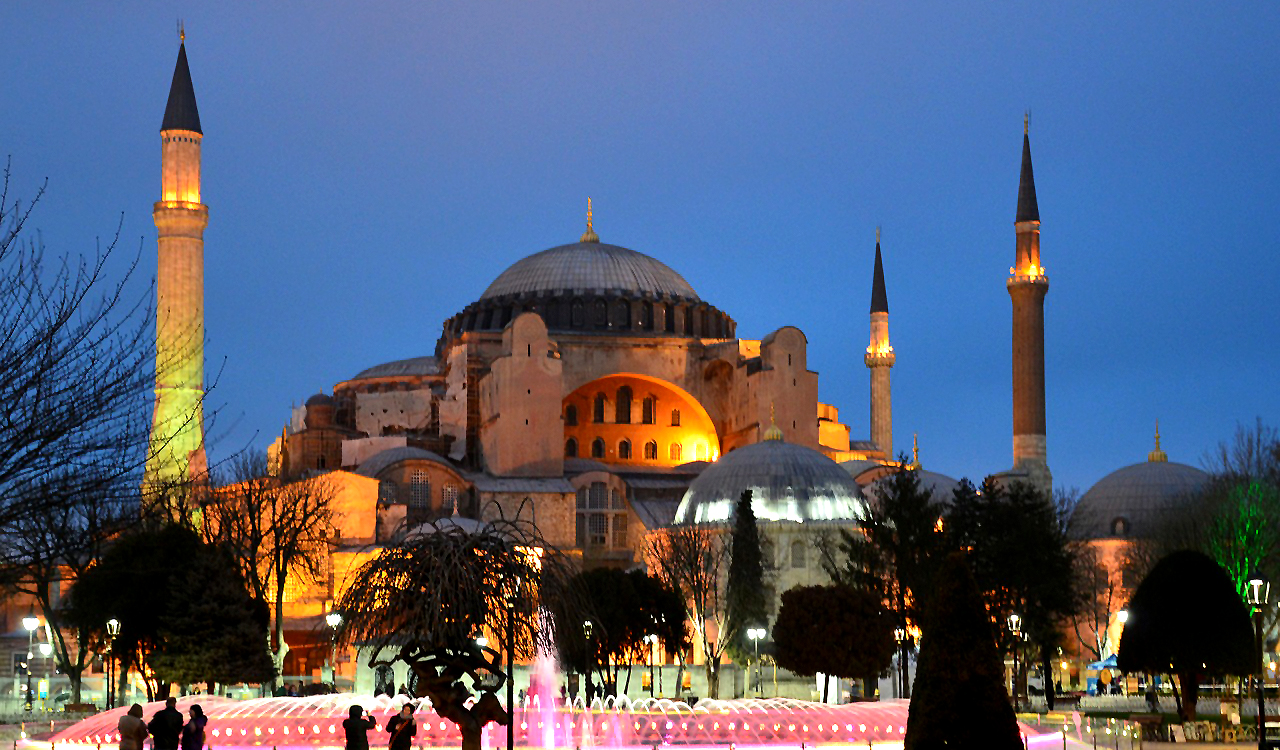
Hagia Sophia (or Aya Sofya) is one of the world’s most beautiful buildings, built to be the world’s largest place of worship by Emperor Justinian in 532 AD. The church became a Mosque under the Ottomans, and its mosaics and decoration were plastered over. They have been successively revealed since the 1930s, when the building was declared a museum by Turkey’s legendary ruler, Atatürk.
The Hagia Sophia’s golden mosaics are rivaled only by Ravenna’s, and its design was the inspiration for the basilica of San Marco in Venice. The huge complex is a riot of domes and minarets, focusing on the huge central dome which for centuries was unrivaled as an architectural masterpiece.
Inside, the lofty interior is a soaring sequence of domed and arched spaces, centering on the shell-like apse and the massive dome, which seems to float unsupported and gives the church its amazing sense of space.
>> Private Tours to Hagia Sophia
Ataturk Mausoleum (Anit Kabir)
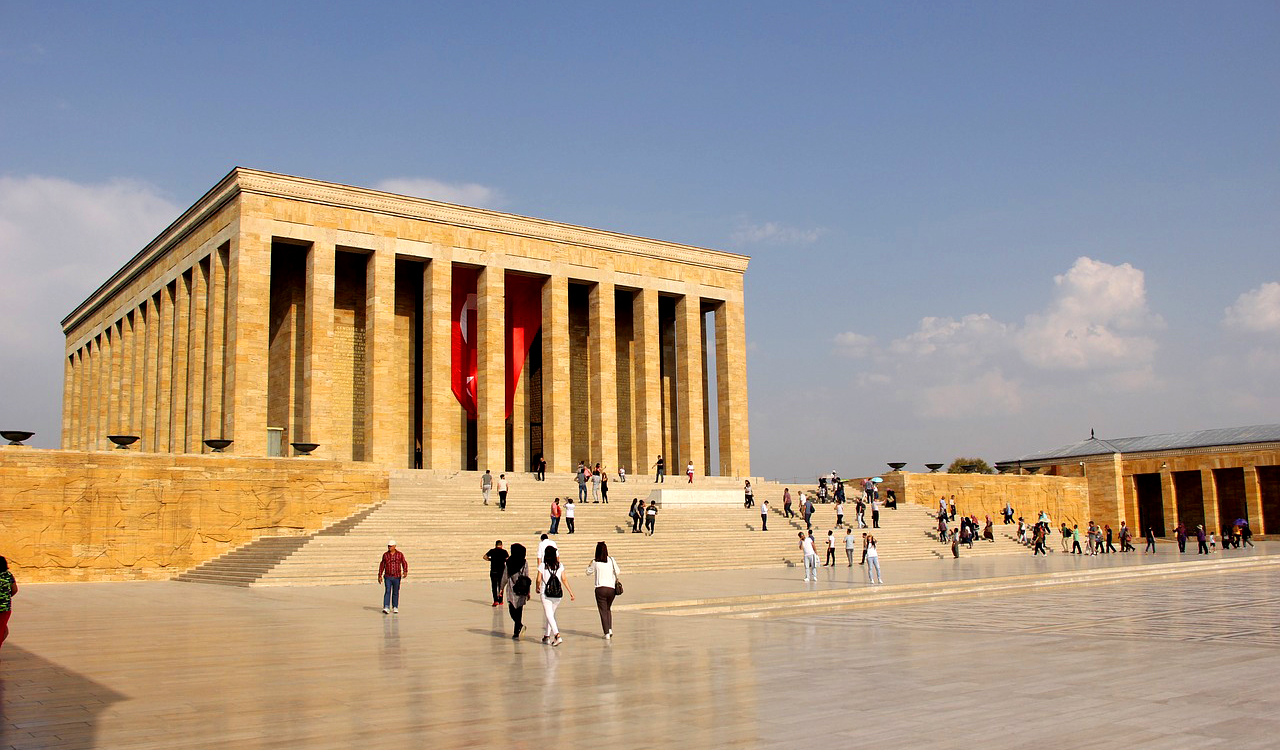
The Ataturk Maouselum, part of the Anıt Kabir (or “memorial tomb”), is the mausoleum of Mustapha Kemal Ataturk, the leader of the Turkish War of Independence and the founder and first president of the Republic of Turkey. The Anit Kabir encapsulates both architectural impressiveness and historical significance, making it one of Ankara’s must sees.
Anit Kabir’s construction spanned 9 years and commenced in 1944. It consists of four main parts – the Road of Lions, the Ceremonial Plaza, the Hall of Honor (the location of Atatürk’s tomb) and the Peace Park that surrounds the monument.
Inside of the ceremonial plaza you can find several museum rooms displaying memorabilia and personal artifacts of Ataturk, giving visitors a sense of the famous leader’s life. The Hall of Honor is an impressively lofty structure, lined in marble and decorated with mosaics. An immense marble cenotaph stands at the northern end of the hall above the actual tomb.
>> Private Tours to The Ataturk Maouselum
Other famous tourist sites in Turkey that are worth visiting are Ankara Citadel, Dolmabahce Palace, Pergamon, Hierapolis, etc.

